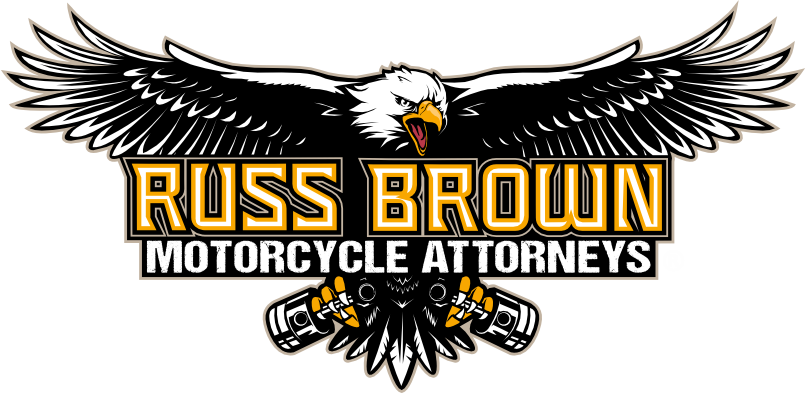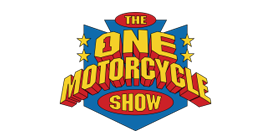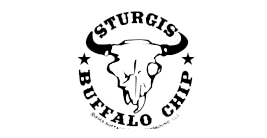Hollister 2019 – It’s All About The Ride!
Mike Corbin by John Chadwell
“Mine is the test butt that keeps things moving,” Corbin joked.
 Photo by John Chadwell
Photo by John Chadwell
Live long enough and everyone will experience regret and irony. In my case, both regret and irony are forever linked to a brilliant red 2000 Suzuki Intruder with its custom-made black and red Corbin saddle.
I really loved that Intruder, but after one-too-many close calls on Los Angeles freeways, I decided to hang up my dreams of long rides on winding backroads aboard my magic cruiser. So, I sold it one spring day and watched sadly as the new owner road away without a backward glance.
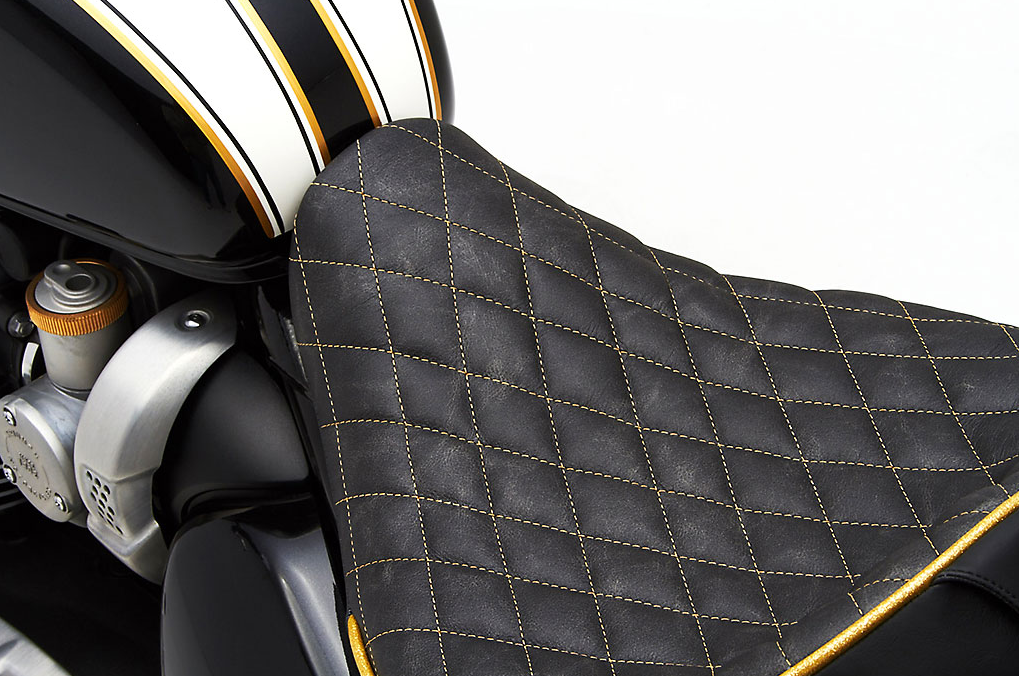 Courtesy of Corbin
Courtesy of Corbin
How could I have known that within months, I would move to Hollister, Calif., “Home of the American biker,” with hundreds of miles of backroads perfect for long rides through some of the most picturesque county in the state? And ironies of ironies, I would never have guessed I would become acquainted with one of the most iconic names in the biker world: Mike Corbin, the very same Corbin who designed and constructed that aerodynamic saddle on my dearly departed Intruder.
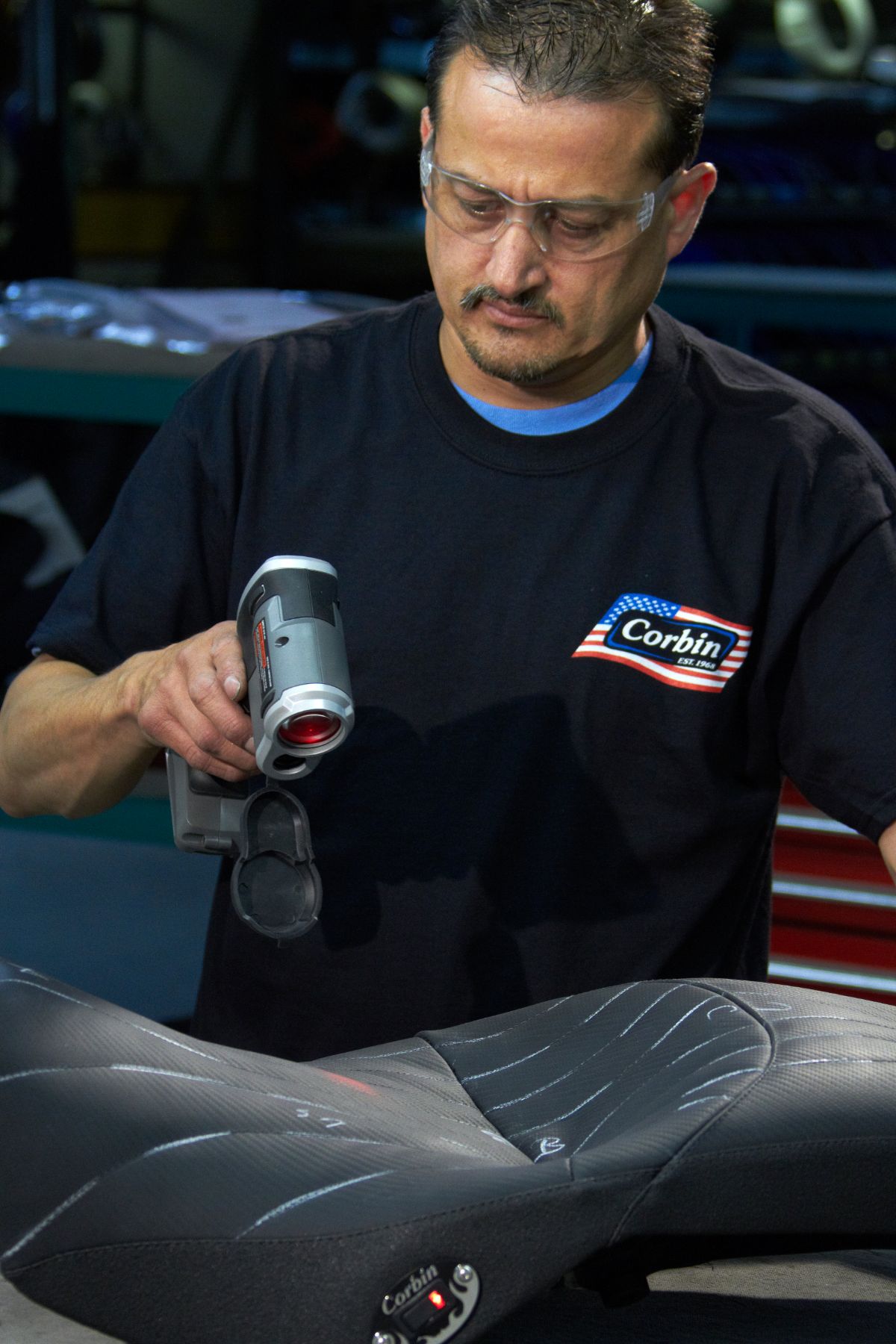 Courtesy of Corbin
Courtesy of Corbin
To say Mike Corbin makes motorcycle seats is not to know the man. You wouldn’t exactly call him young now, but Corbin certainly isn’t old when it comes to his enthusiasm and grit concerning all things related to motorcycles. To visit his facility in Hollister is to be exposed to the past in his showroom and The Wizard Café with its vintage photos of biker movies and even an experimental car hanging from the ceiling, as well as busy production line where you can ride in and have a new saddle custom-built as you wait.
There’s also that electric-powered motorcycle. What’s that all about?
Corbin set the world land-speed record in 1974 of 165.387 mph, on a bike aptly named Quicksilver, making him the fastest man alive on a two-wheeled, electric-powered vehicle. Mike’s land speed record stood for 38 years until 2012.
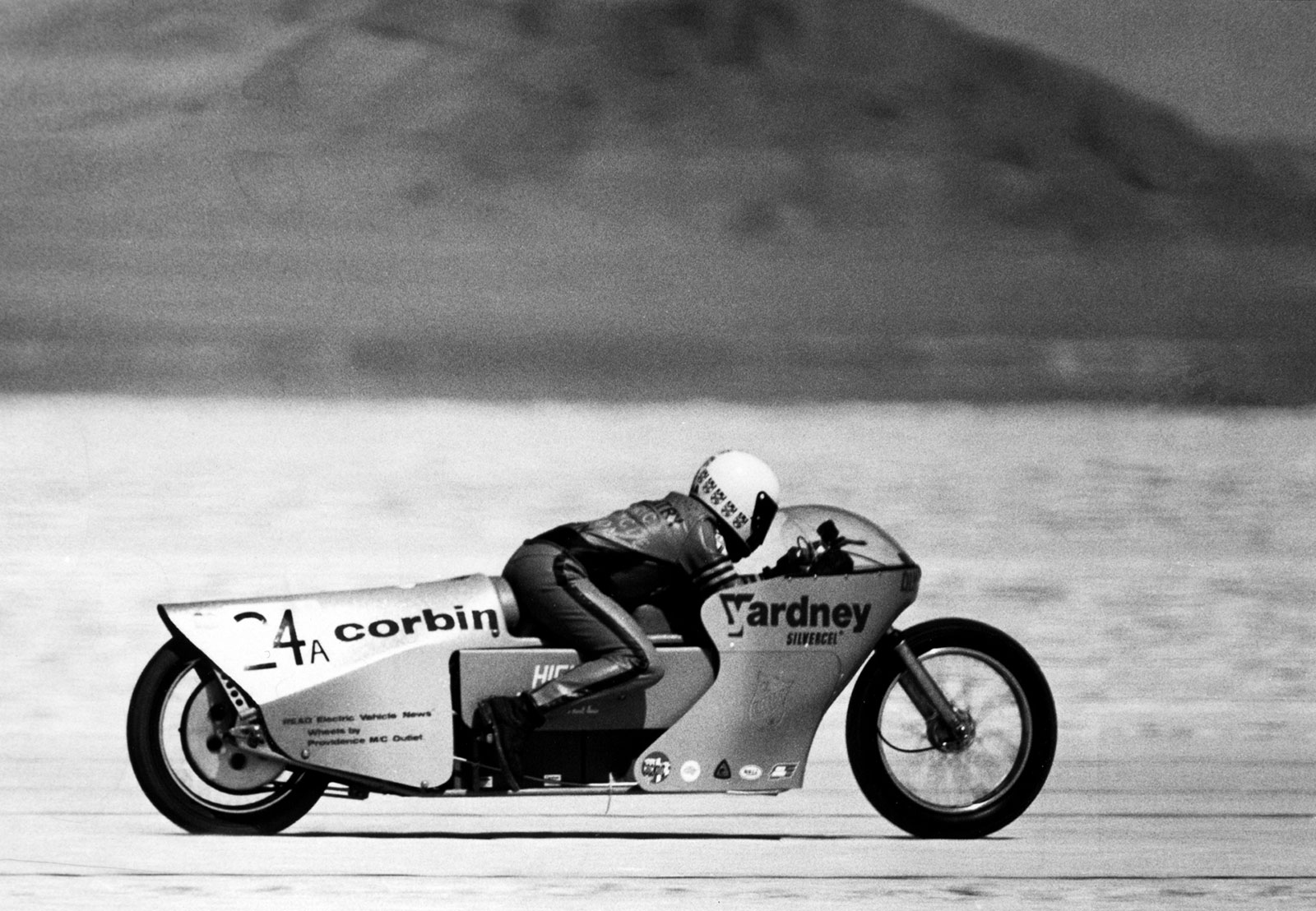 Courtsey of Mike Corbin
Courtsey of Mike Corbin
Corbin may no longer be setting speed records, but no one who knows him would say he has slowed down in setting standards for innovation and pure poetry in design when it comes to motorcycle seats. In an industry that he arguably invented, Corbin has remained the dominant player for 51 years.
“In motorcycle seats, we have about 85% of the market,” he said, estimating the potential US market for custom motorcycle seats at $30 million. While there is no documentation to prove that figure, Corbin stands by his claim of dominance by conducting what would best be described as an unscientific market study.
“I go to rallies and walk down Main Street, where I count seats,” he said.
One of the earliest events that shaped Corbin and set him on his journey to becoming a key player in the motorcycle industry was the release of the movie, The Wild One.
 Photo by John Chadwell
Photo by John Chadwell
“I was 10 when it came out in 1953,” he said. “My father forbid me to do three things: smoke cigarettes, drink beer, and to see The Wild One. So I stole his cigarettes and beer and watched The Wild One every time it came to town. I wanted to be like Johnny [Marlon Brando’s character, Johnny Strabler]. He was like the toughest guy and he was free. He could roam around on his Triumph and do whatever he wanted. I was from an Irish immigrant family and I was trying to be an American and get into whatever was happening next. At that age, I saw guys like Johnny as ‘ancient iron.’”
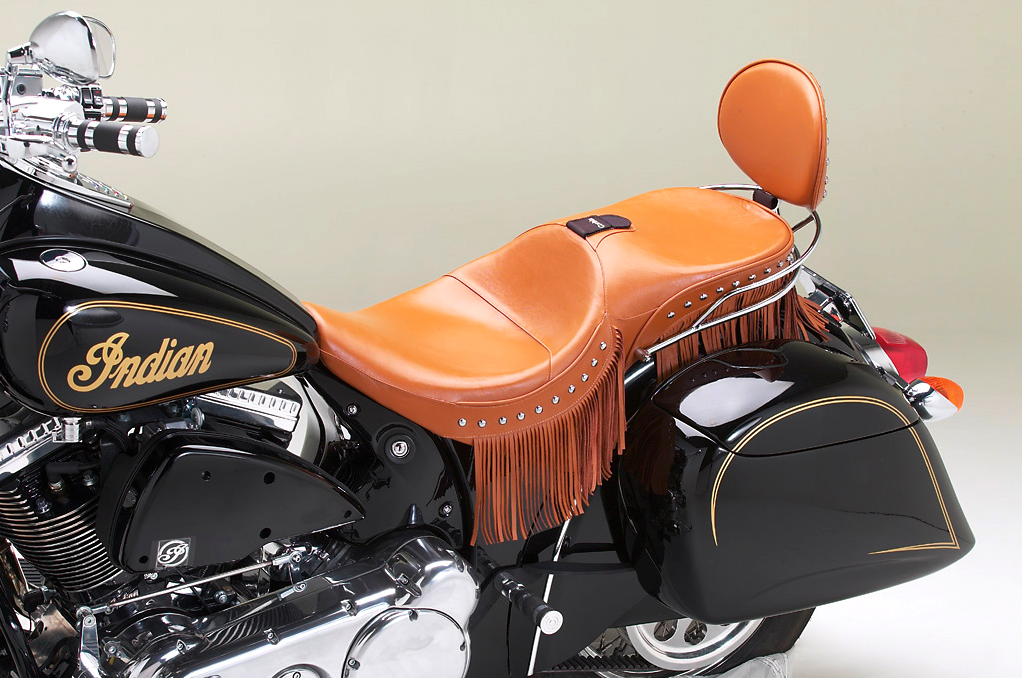 Courtesy of Corbin
Courtesy of Corbin
It was almost a matter of pride for Corbin to defy his father, so he took his rebel ways to the next step when he enlisted in the Navy during the Vietnam War. He packed a sleeping bag, toothbrush, and hopped aboard his 1959 Triumph Bonneville. He drove from his home in Gardner, Mass. to Alameda, Calif., and his new home, the aircraft carrier, USS Ranger.
Whenever the ship was in port in San Francisco, Corbin would take the short drive into Oakland, where he hoped to see another rebel he admired—Sonny Barger, a founding member of the Oakland chapter of the Hell’s Angels.
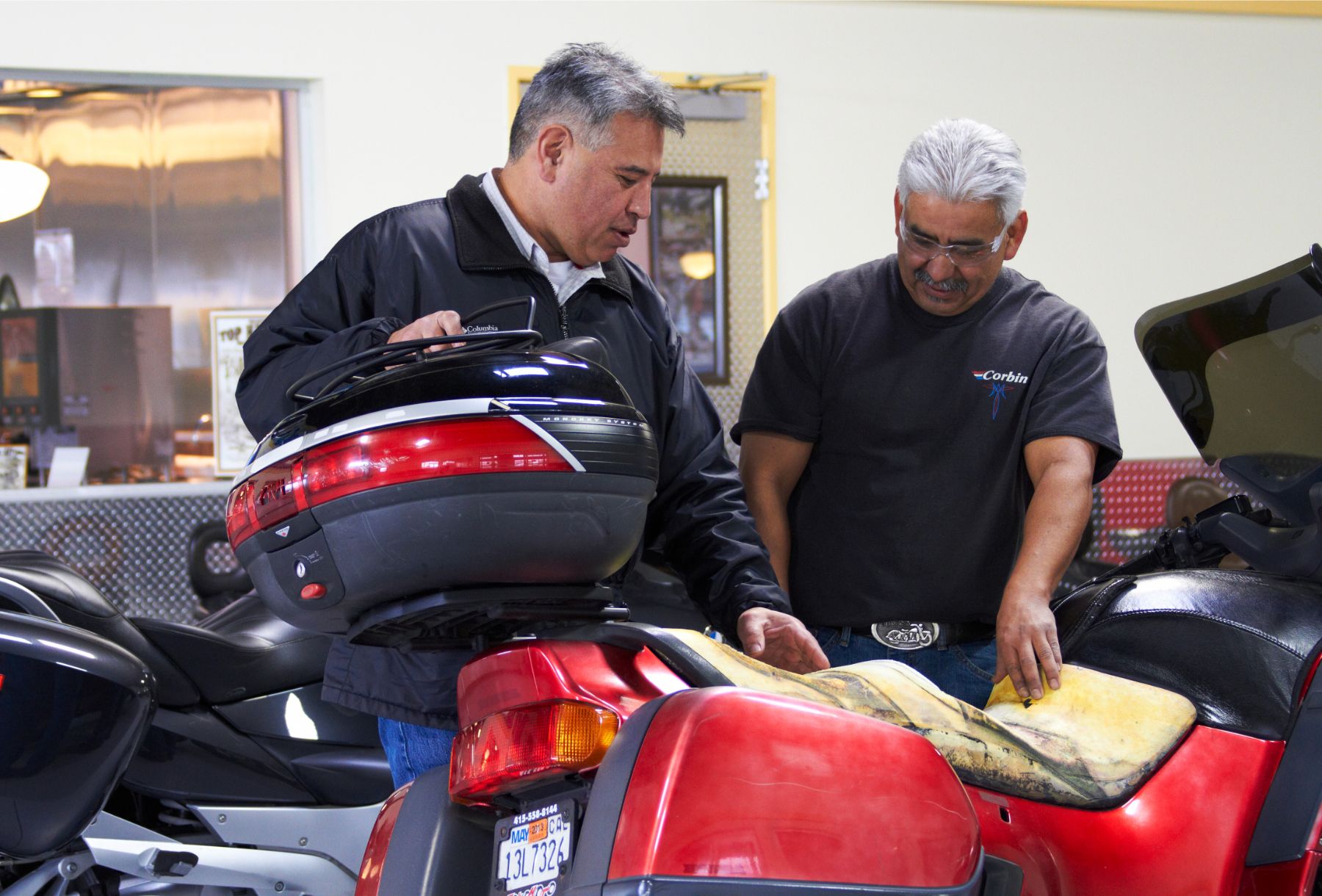 Courtesy of Corbin
Courtesy of Corbin
“I first started hearing about the Hell’s Angels in the late 50s,” Corbin said. “I admired them, but I didn’t want to be one because I didn’t think I was tough enough. Sonny was like the real Johnny to me.”
It was during this time that Corbin began tinkering around with building seats for his motorcycle. One of his friends asked him to make a seat for his Harley Sportster. His friend was so happy with his new seat that he showed it to the owner of the local Harley-Davidson shop. Seeing the sales potential in the seats, the owner asked Corbin to make more seats. Corbin said those seats changed his life.
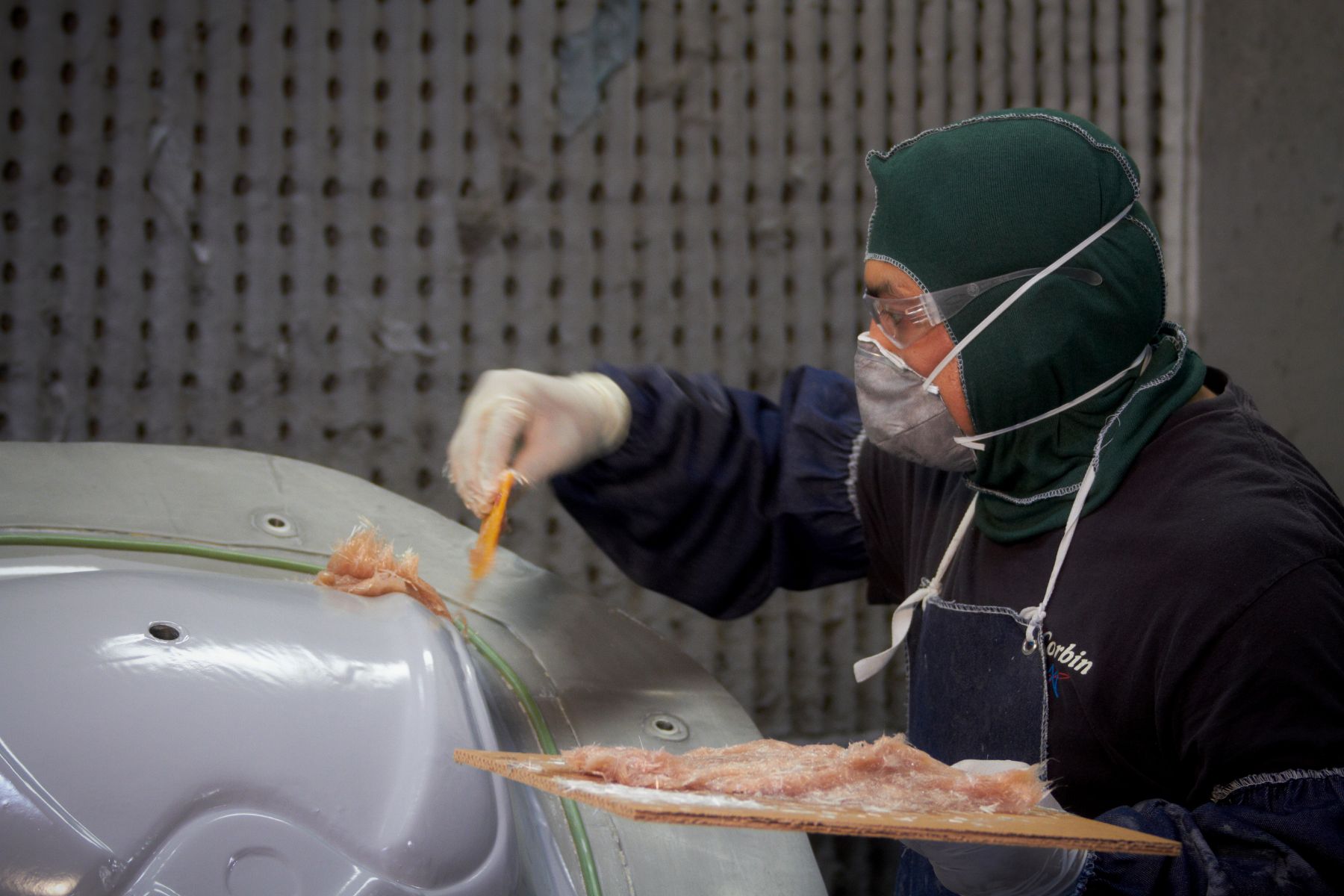 Courtesy of Corbin
Courtesy of Corbin
“I never thought I could make a living building motorcycle parts,” he said, relating that he had been discharged from the navy and worked as an electrician, starting his own business called Camtron.
Then one day Corbin decided to close the doors on Camtron. He sold his truck and tools for $4,000, and as Corbin Manufacturing, he became a full-time motorcycle seat maker in 1968. Billing himself as the “Saddlier of Motorcycles,” Corbin honed his skill as a designer. Soon, riders were coming by his shop and dealers were ordering his tall-backed banana seats built on wooden bases, as well as his Sportster solo seats.
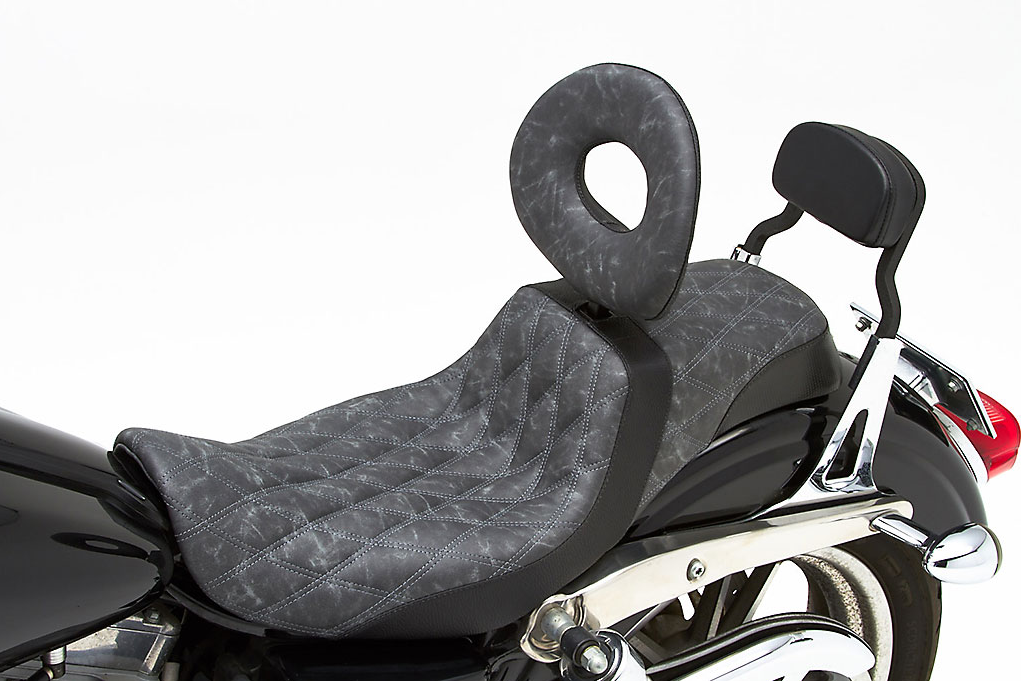 Courtesy of Corbin
Courtesy of Corbin
While not exactly booming, business was good enough. But things were about to dramatically change for the motorcycle industry and for Corbin, as well.
In 1968, Honda introduced the four-cylinder 750. Mass produced and relatively inexpensive, a growing segment of Americans were introduced to motorcycling. Then, in 1969, the film, Easy Rider, introduced two drug-transporting dropouts cruising America on choppers.
“Bike sales jumped from 30,000 units a year in the late 60s, to a million and a half units by the mid-70s,” Corbin said. And with the increase in bike sales, Corbin’s sales grew even faster.
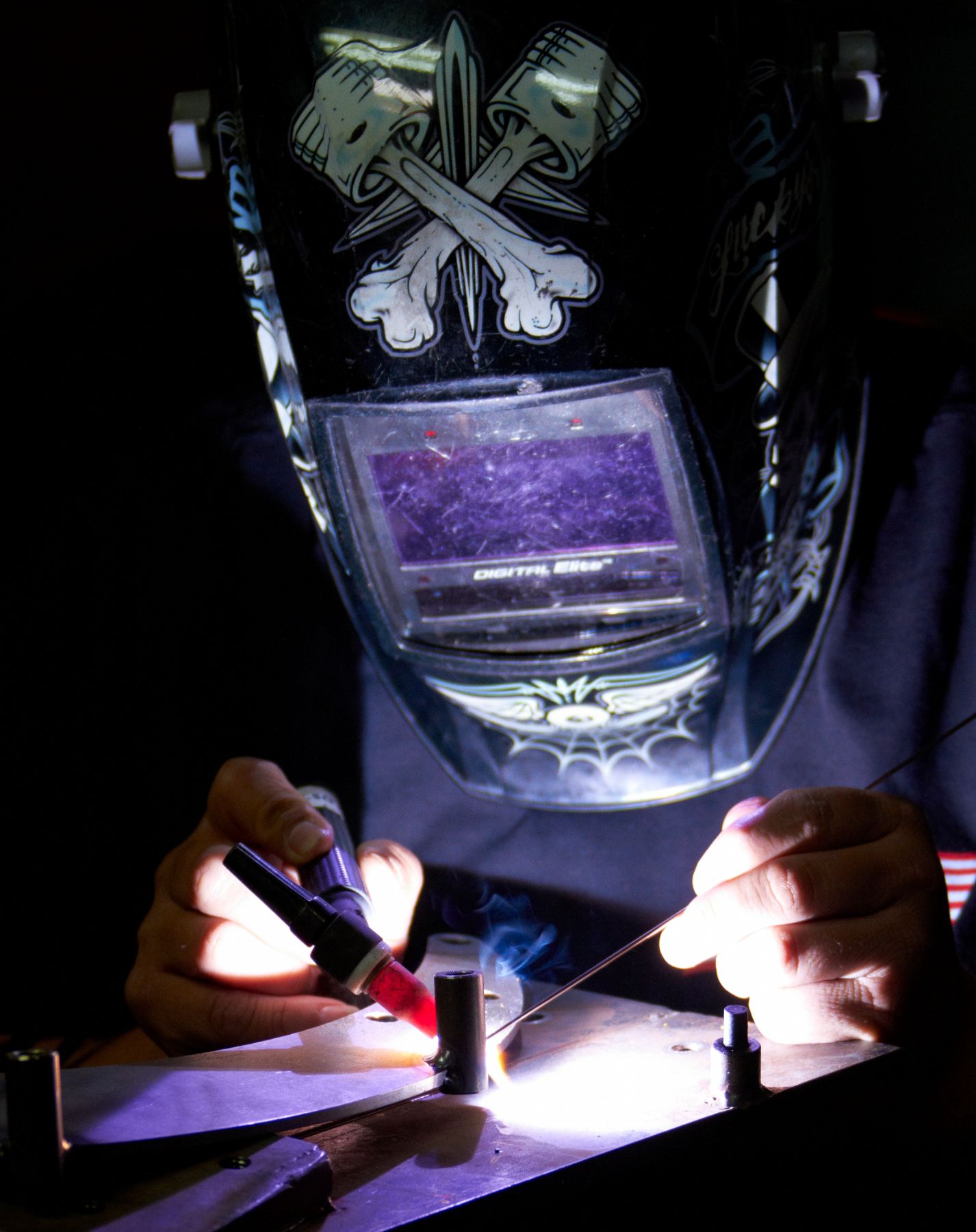 Courtesy of Corbin
Courtesy of Corbin
By the early 80s, there was a new kind of a bike—the Interceptors, the Ninjas, and the GSXRs.
“Having been a racer, I was still a race fan,” he said. “I loved the idea of these new bikes and they called for a new kind of a seat, which I came up with, and called it the Gunfighter. It had the graphics, the colors, the shape, and the ergonomics. I made a few by hand on stock base plates. They went over really big, and I could sell them as fast as I could make them.”
Over the years, he has honed not only his designs but his entire approach to conducting business.
“The first important thing is the maximum observation of the customer, the complete understanding what bike you have, why you chose it, what you do with it, and what you think it does for you,” he said. “The next step is to build something that really works. In other words, price points are an issue, materials are an issue, the looks are an issue, but the overall value added to your environment boils down to does it really work?
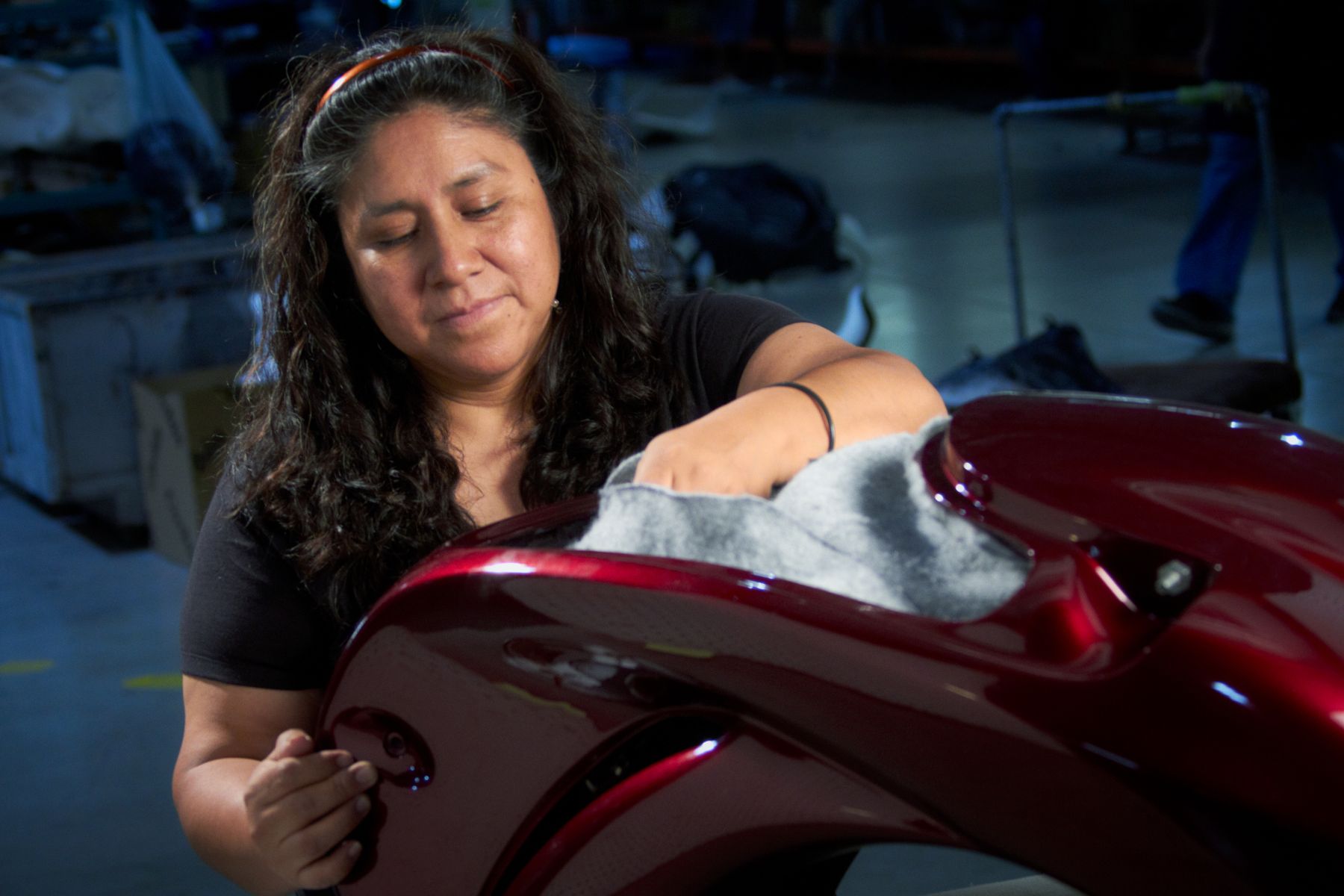 Courtesy of Corbin
Courtesy of Corbin
“Where I’m unique is that most of my ideas come in fragments. You’ll say something about your bike. You rode it here and something happened to you. I keep that in a little vault in my head. Then I ride the bike and I make an observation. My ideas are generated by involving myself with that rider and that bike.”
Then there’s the bet on the money factor, as he calls it.
“I can draw up my idea and explain how to make it to one of my Wizards [designers] in 10 minutes. That’s the easy part,” he said. “But what’s the tooling investment going to be? It could be $10,000; it could be $50,000, which means the first seat that comes out of the mold costs $50,000. This is where you have to make a bet on the money because along with your new design or invention, you’re your own financial gambler. Will you get your money back on that bike?”
 Photo by John Chadwell
Photo by John Chadwell
Corbin jokes that he is no longer a rebel, but a Republican. Rebel or Republican, he proudly shows off his Hollister facility that employees 200 and turns out hundreds of seats each day through a process that he invented and feels is what sets him apart from other motorcycle aftermarket manufacturers.
“This guy in LA invented fast fiberglass that was half polyester and half polyurethane,” he said. “Unlike regular fiberglass, it cures in 20 minutes instead of eight hours. What I invented was a new way to make things with it. The first design was to put the fast fiberglass in a mold to make the base plates. That takes about 12 minutes now. Then we pour liquid foam urethane in the mold just like a milkshake. The foam rises to the shape of the seat in a couple of minutes, so you now have the base plate and the foam cushion in one piece. This process gave us a production methodology that was unlike any other way of making seats.”
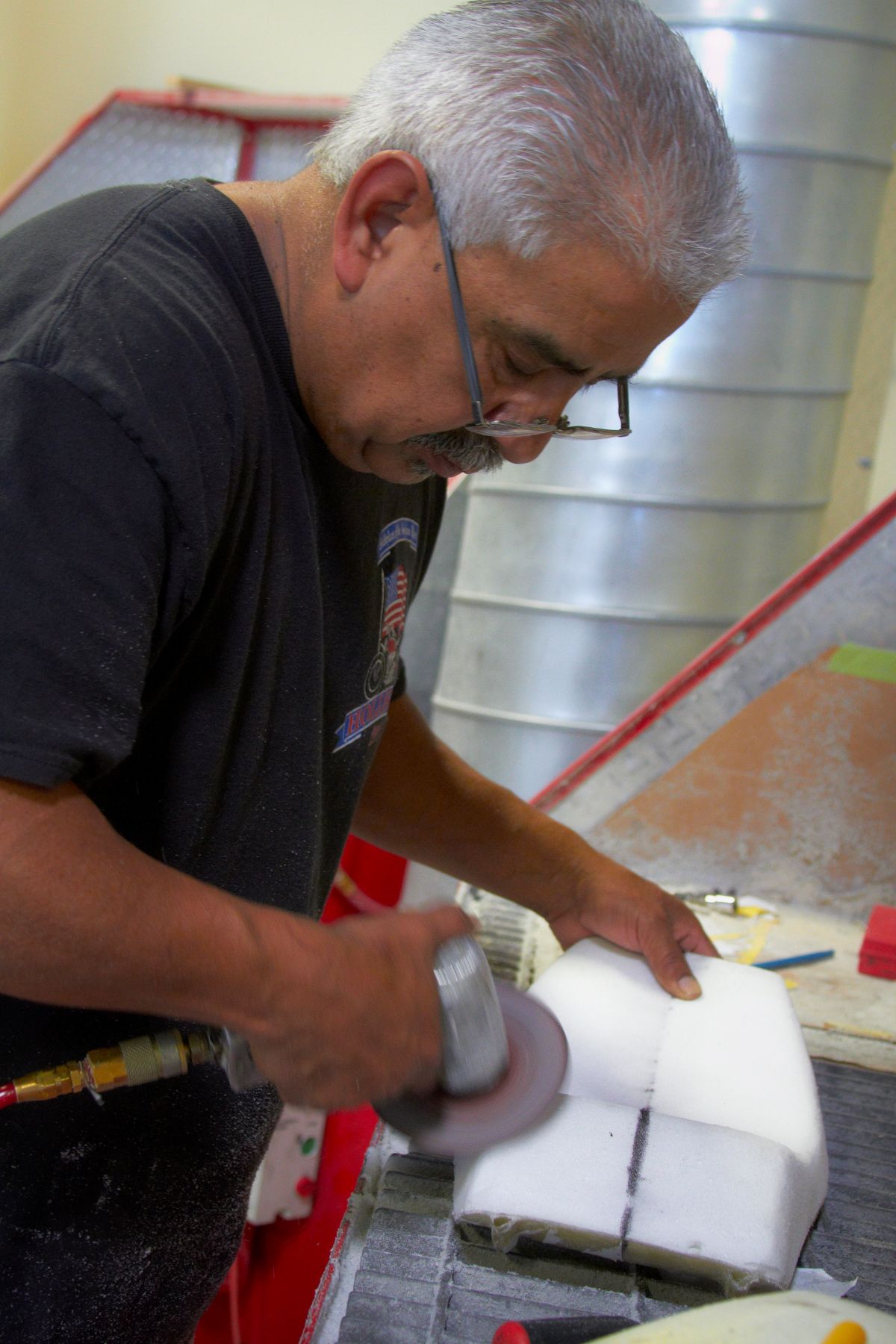 Courtesy of Corbin
Courtesy of Corbin
According to Corbin, this production process offers a number of advantages, the primary one being that operators don’t have to know how the foam attaches to the base plate. They don’t even have to know what model motorcycle the base plate fits.
“All they have to know is how to build the mold,” he said. “We can have an unlimited number of molds that all have different shapes. Each mold is for a specific motorcycle and has a part number on it. If you fill the mold right, it will fit every single time. The foam is mechanically and chemically attached to the base plate, which makes it nearly impossible to rip apart.”
Corbin explained that the patented process enables the company to make over 400 different seats a day.
“This gives us market flexibility,” he said. “You could call me and tell me about your particular motorcycle. I can write an order, and make one for you: whereas a dealer can call and order 10 seats. This is market flexibility and quick shift advantage over any other way of making products.”
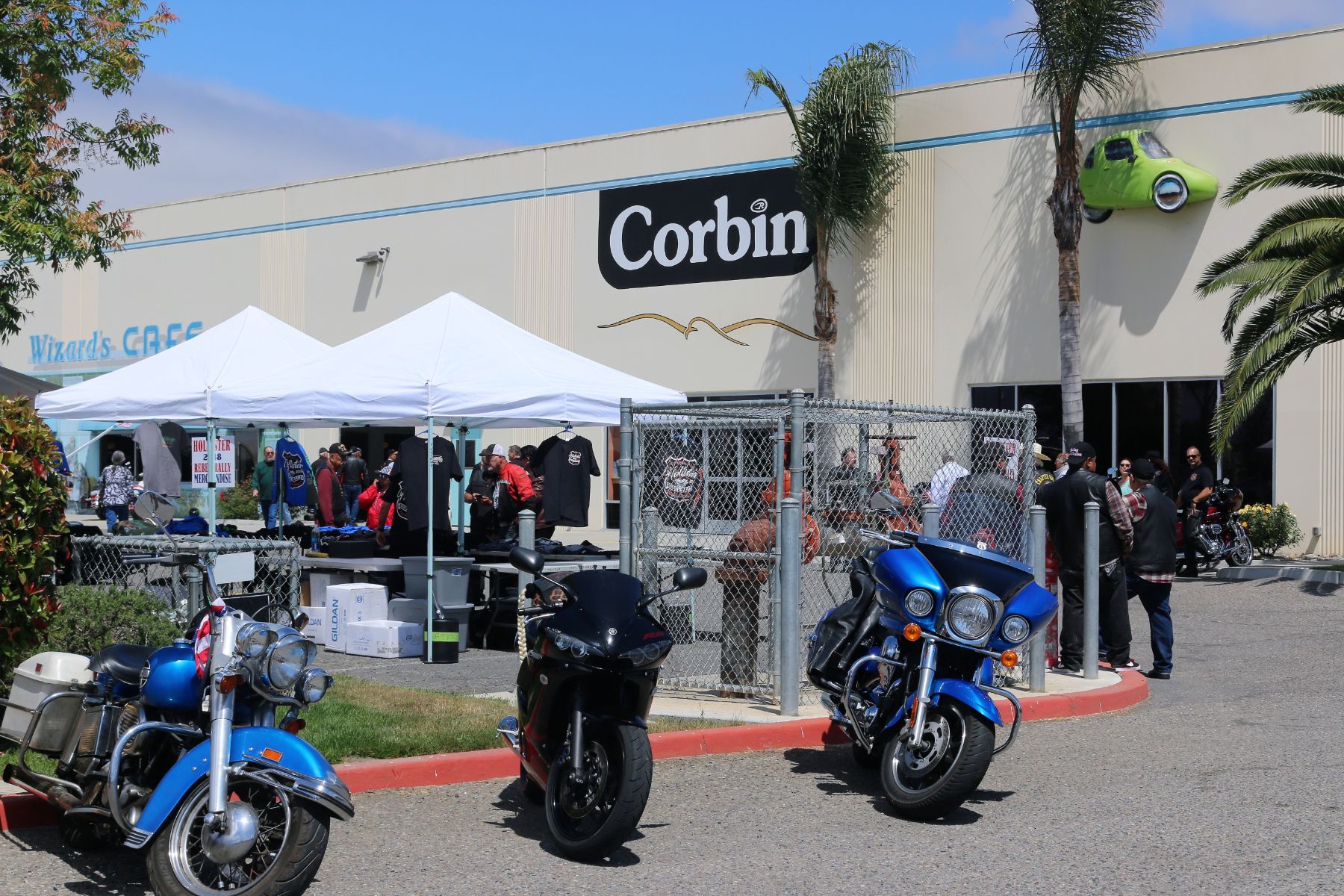 Photo by John Chadwell
Photo by John Chadwell
Corbin is constantly redefining who he is and, according to him, he’s better today than he’s ever been.
“You have to leapfrog your previous history all the time,” he said. “You have to reinvest in the way you think and the way you make things.”
And the bottom line is it’s Mike Corbin’s butt that literally makes the final decision. No seat can go from the design shop to the assembly line until he has personally sat on it and given it a test ride.
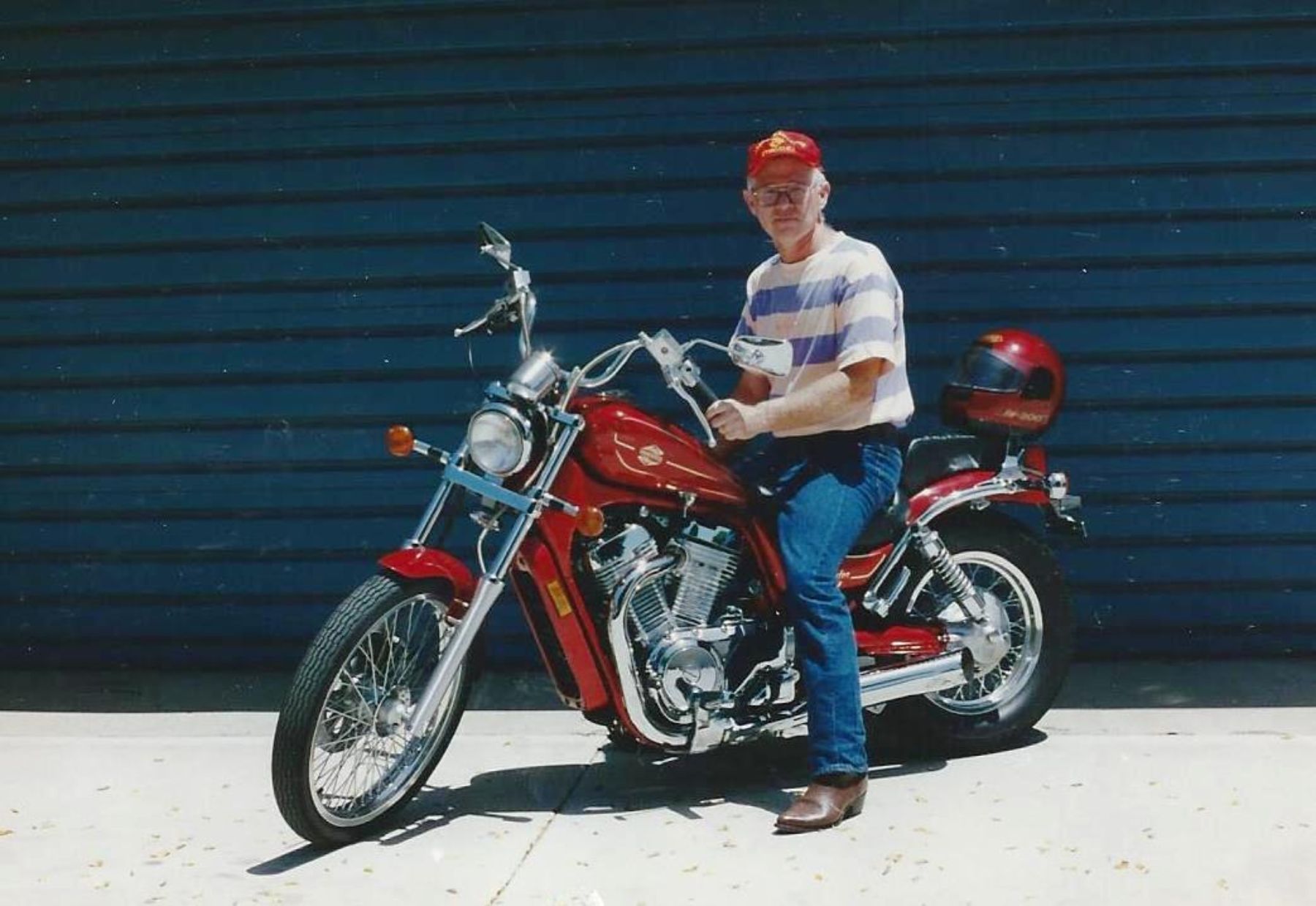 John Chadwell on a Corbin saddle
John Chadwell on a Corbin saddle
Join us July 4th-9th for Hollister 2019!
Special thanks to www.corbin.com
